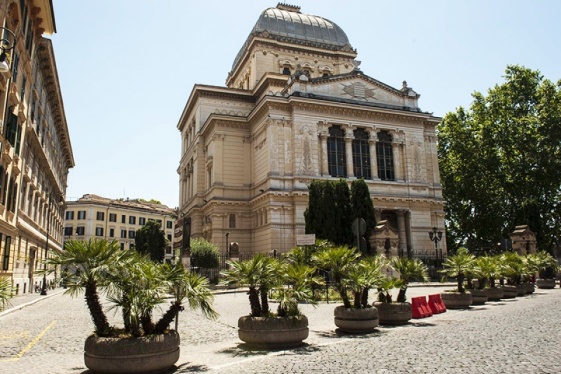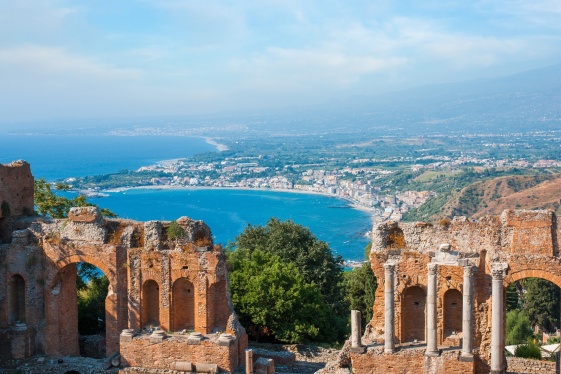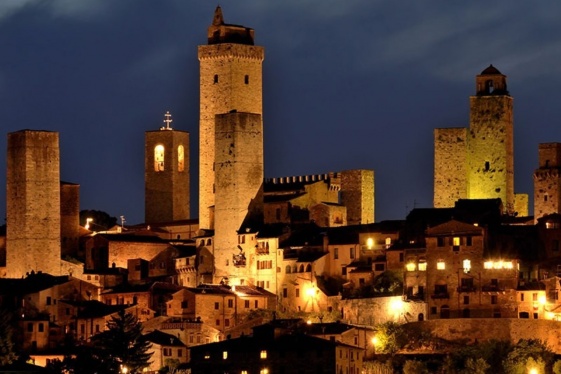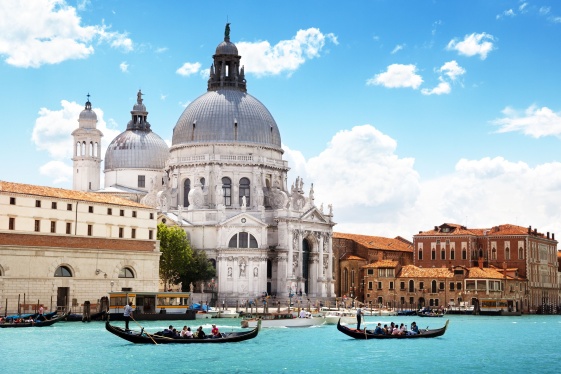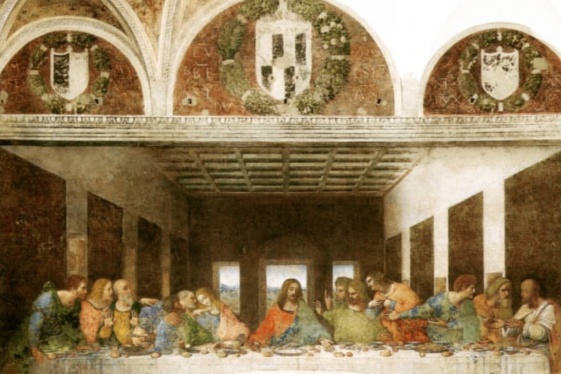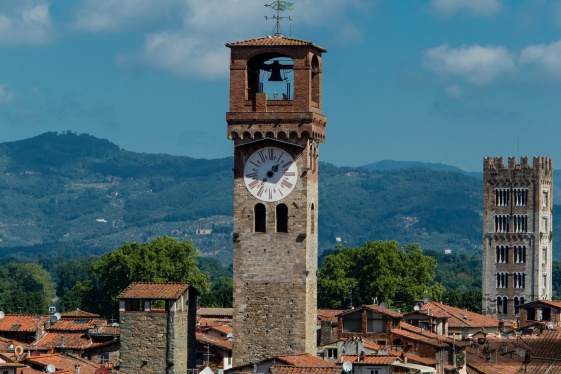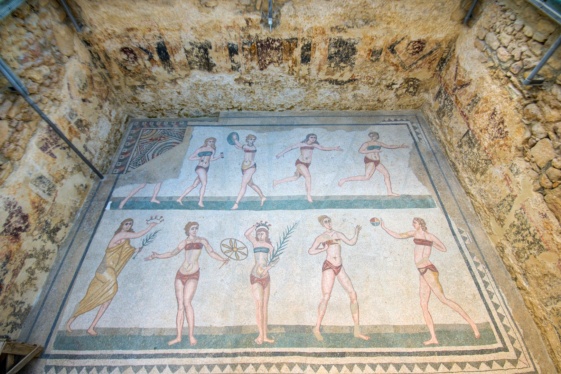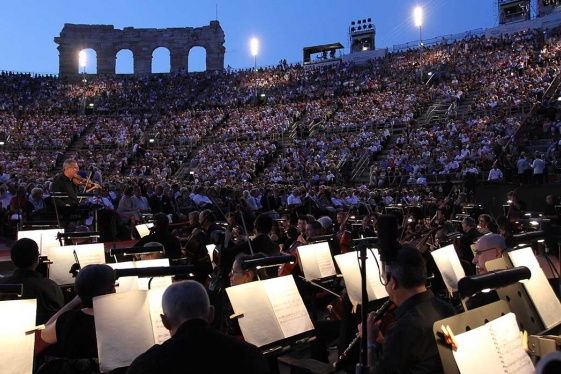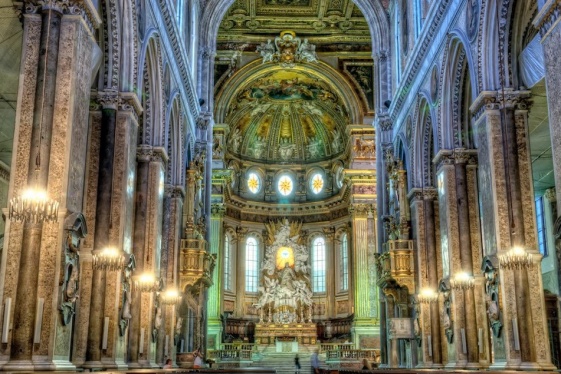Italian culture and history: The Ghetto of Rome
Rome is home to one of the oldest Jewish communities in the world. Its history is closely intertwined with the events of the Roman Catholic Church and the papacy, which over the centuries has played the roles of both protector and persecutor of the Roman Jews. Culturally rich and vibrant, even though it is spread out throughout the city, the Roman...
READ MOREItalian culture and history: Taormina
Just two stones’ throw away from the Strait dividing Sicily from the Italian Peninsula lies delectable Taormina (Tauromenion in Antiquity), facing out toward the Ionian Sea from a high, natural terrace. With its Medieval architecture, its ancient Greek soul, and the colors and smells of Mediterranean foliage, Taormina is one of the most beautiful p...
READ MOREItalian culture and history: San Gimignano
In the sun-drenched Sienese hills of the Val d’Elsa stands the gorgeous hilltown of San Gimignano, a splendorous Medieval atmosphere enwrapped by its 13th-Century wall. It is the Tuscany that tourists love most, set amidst fields of golden grain, vineyards and ancient borgoes; it is the Tuscany of Chianti and the Val D'Orcia, of beloved culinary tr...
READ MOREItalian culture and history: Venice and Its Lagoon
Celebrated throughout the world for its singular beauty, Venice and its lagoon were added to the list of UNESCO World Heritage Sites in 1987. Founded out of the necessity of fleeing the Barbarian Invasion in the 6th Century, Venice was already one of the most powerful cities in Europe around the year 1000. Beginning with the first settlements on t...
READ MOREItalian culture and history: Nuoro
The Province of Nuoro is situated in east-central Sardinia. Overlooking the Tyrrhenian Sea on its east, it is bordered by the Provinces of Sassari and Olbia-Tempio on its north, by the Province of Oristano in the west, and the Provinces of Cagliari and Ogliastra to its south. It spreads out for 1,519 square miles (16.3% of Sardinian territory) and...
READ MOREItalian culture and history: Santa Maria delle Grazie with The Last Supper
The Church of Santa Maria delle Grazie, situated in the heart of Milan, is an outstanding work of architecture, and an emblem within the Catholic tradition. Santa Maria delle Grazie is perhaps even more famous for its indissoluable connection to Leonardo Da Vinci's fresco of “The Last Supper,” preserved inside its refectory (dining hall). The Churc...
READ MOREItalian culture and history: Lucca
For its monumental and historic wealth, Lucca's center has been proposed as an addition to the UNESCO World Heritage List. It is bountiful with impressive touristic attraction, beginning with the nearly-intact walls that surround the city. You can access the city, passing through one of its six gates; moving clockwise from the north, they are: Port...
READ MOREItalian culture and history: Piazza Armerina, The Villa Romana
Piazza Armerina, splendid art city woven into the heart of Sicily, boasts a slew of monuments that tell of its glorious past. Meanwhile, the apple of the citizens' eyes is the Villa Romana del Casale; originally the property of a powerful Roman family, it dates back to the 4th Century A.D. This majestic Imperial villa, standing tall in the Provinc...
READ MOREItalian culture and history: Italy and Its Orchestras
As have many peoples and cultures around the world, Italy and Italians have exhibited an infinite passion for music for centuries. Italian music in particular boasts a reputation that is tightly bound to the names of important individuals, from singers to orchestra conductors and composers. In reality, the renown of music from the Bel Paese could n...
READ MOREItalian culture and history: Naples, the Historic Center
Visiting Naples's historic center means traveling through twenty centuries of history. The design of its streets, piazzas, churches, monuments and public buildings and castles constitute a jewel box of artistic and historical treasures of exceptional importance, so much so that together, they earned their spot on the UNESCO World Heritage List in 1...
READ MORE


